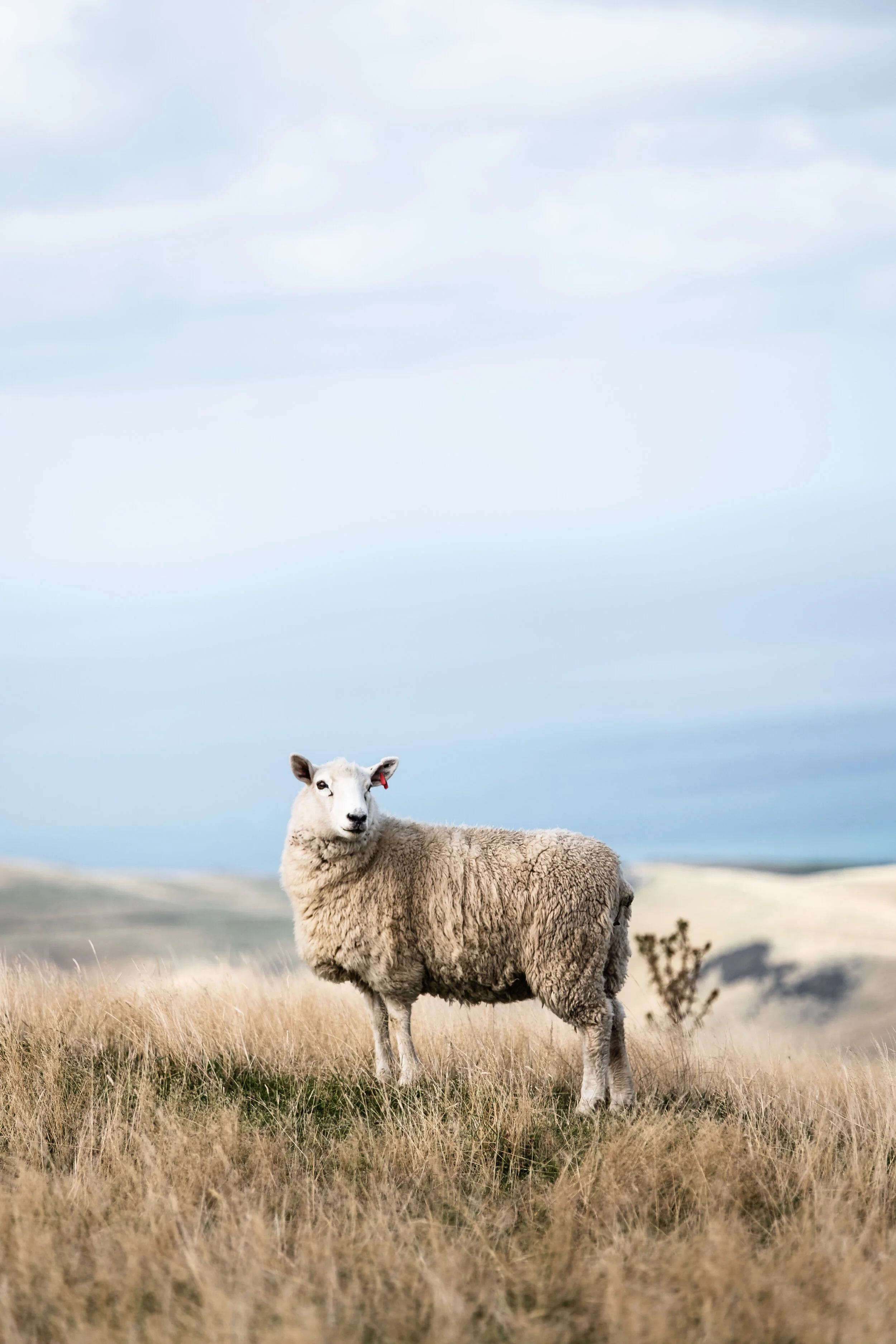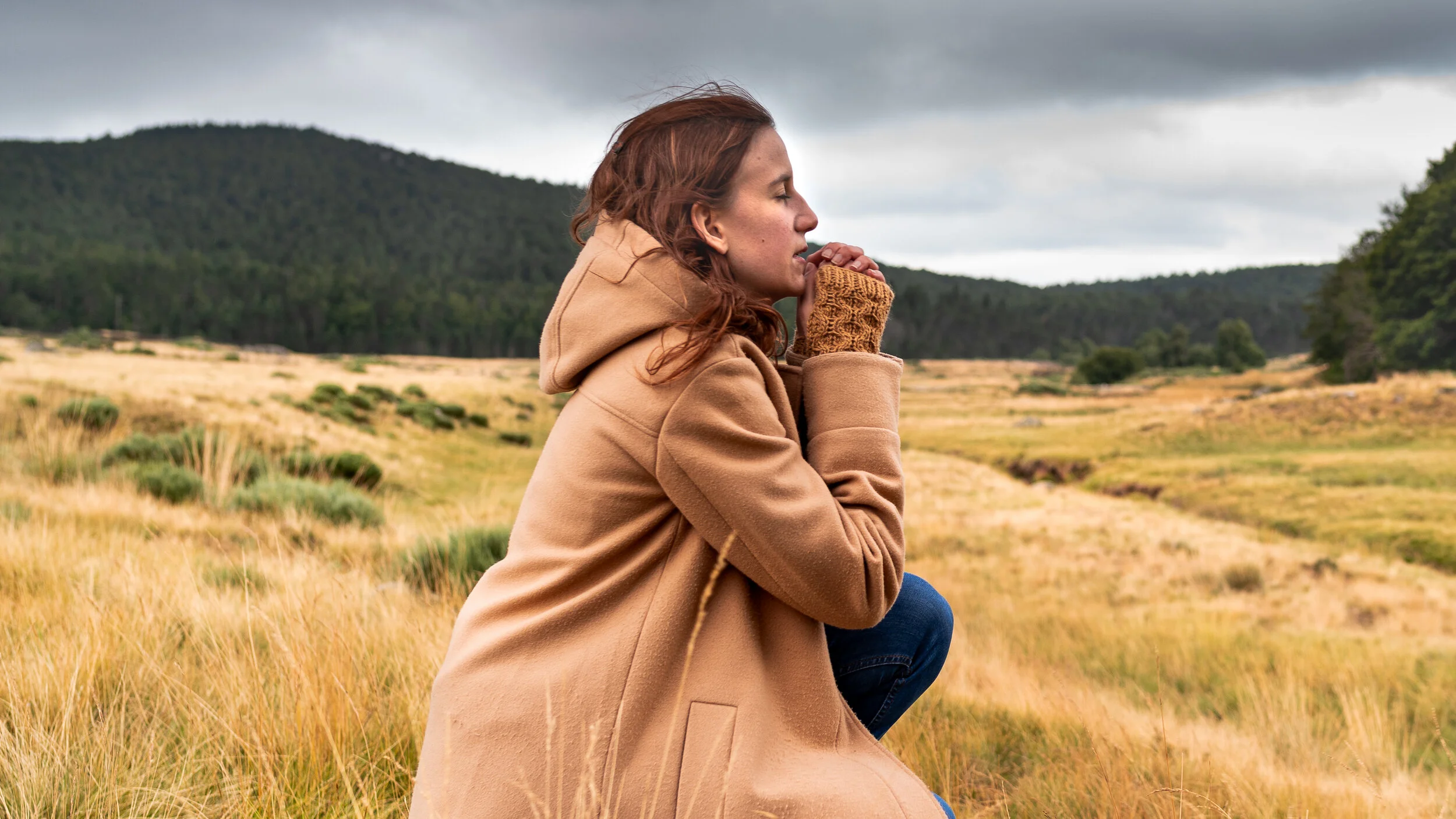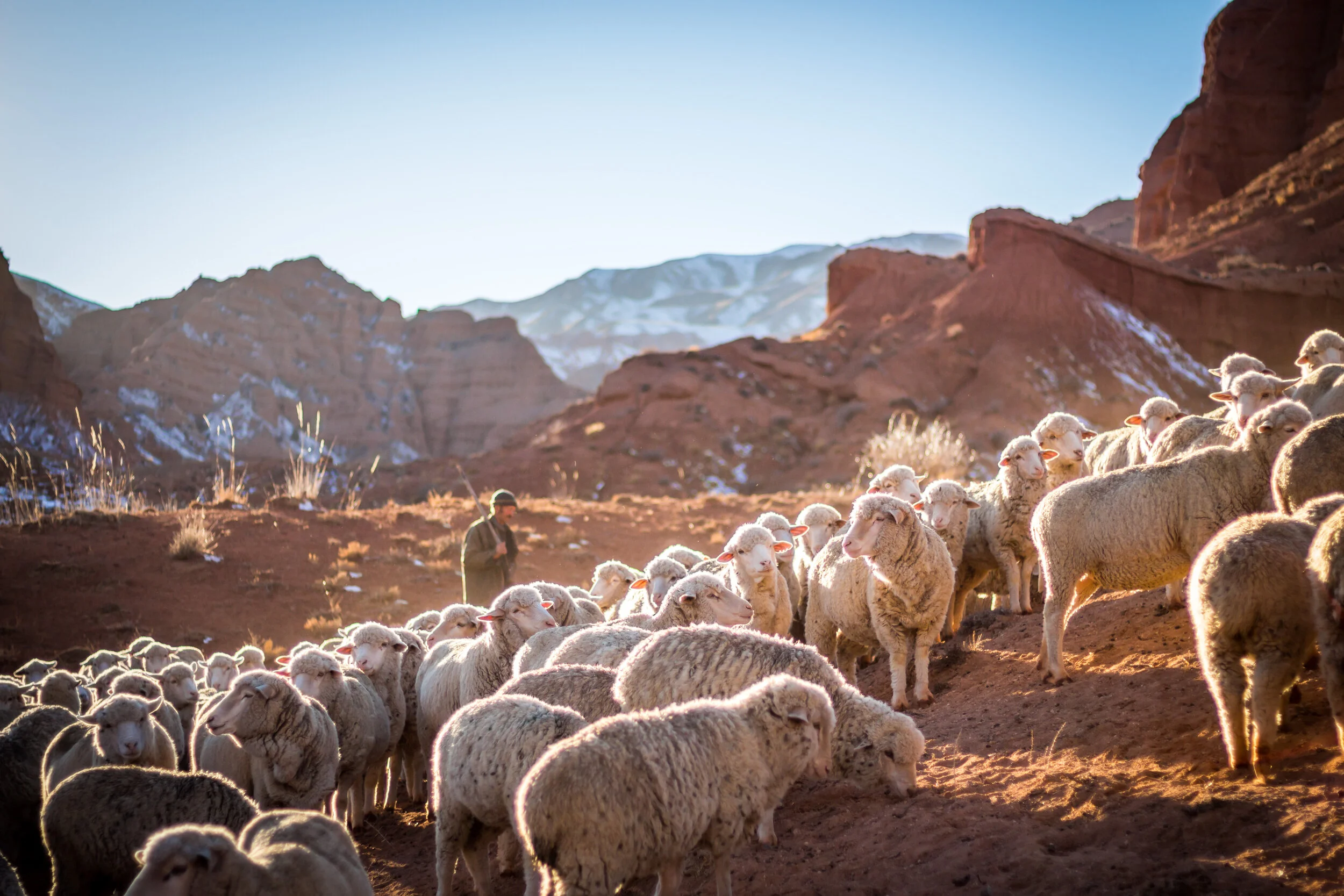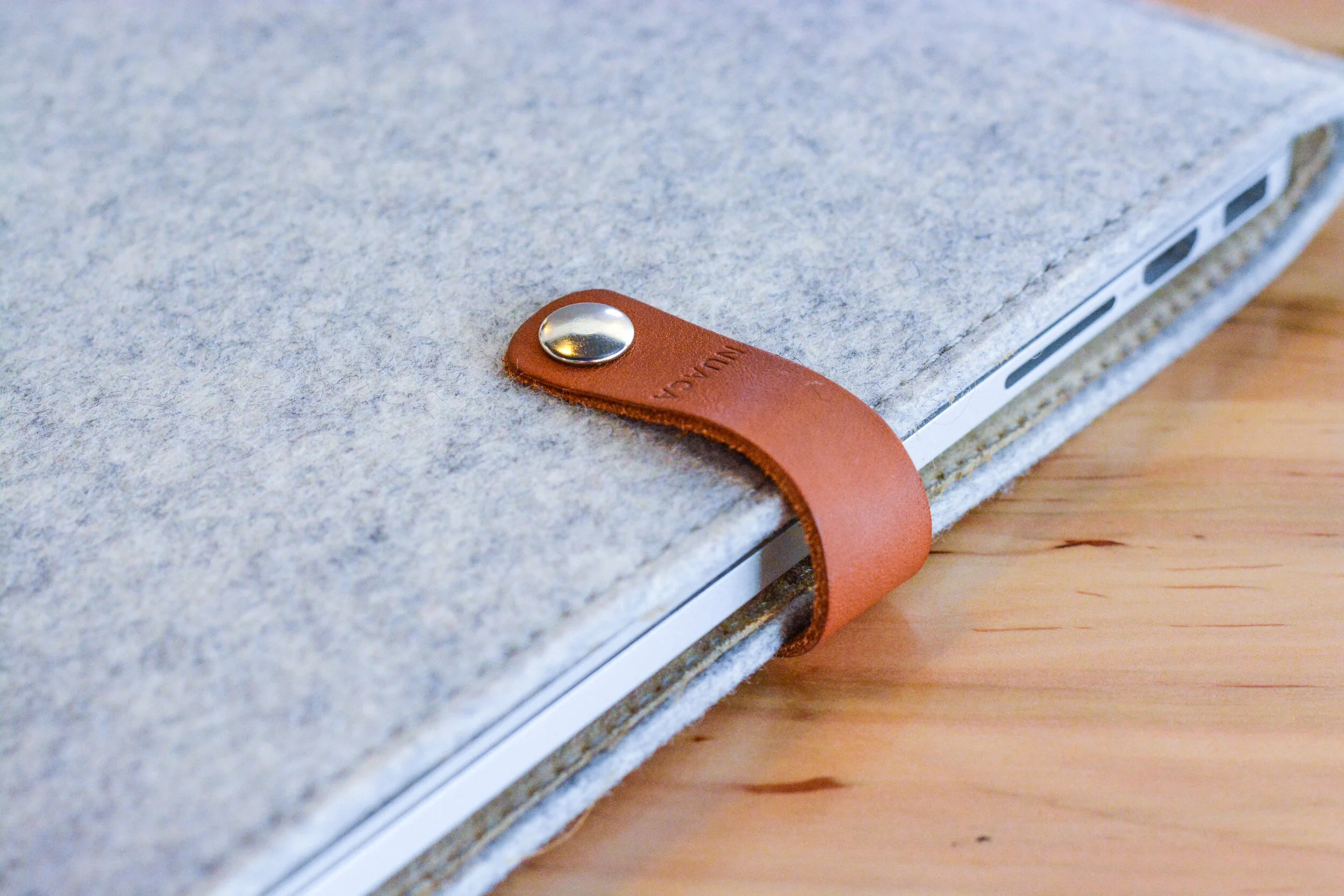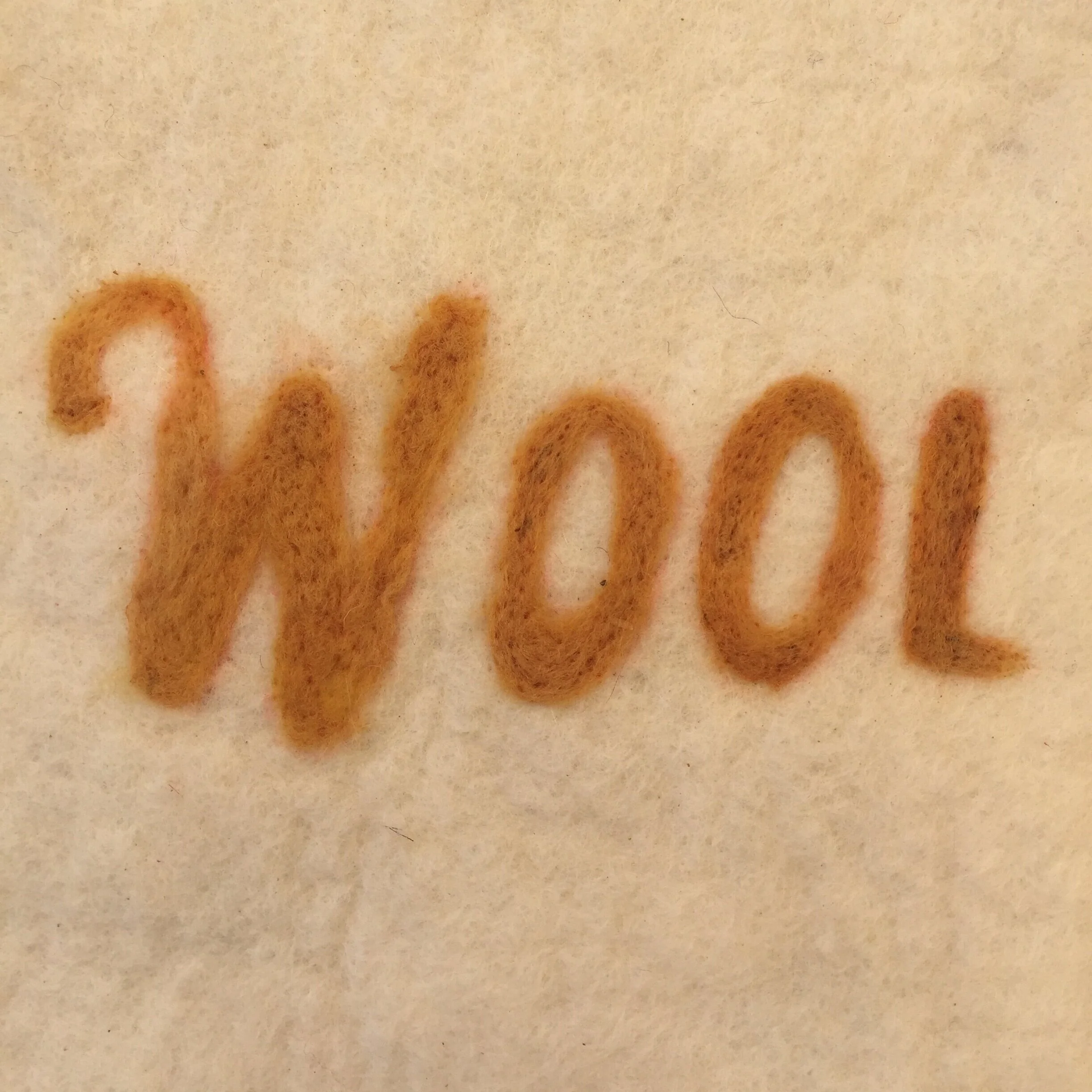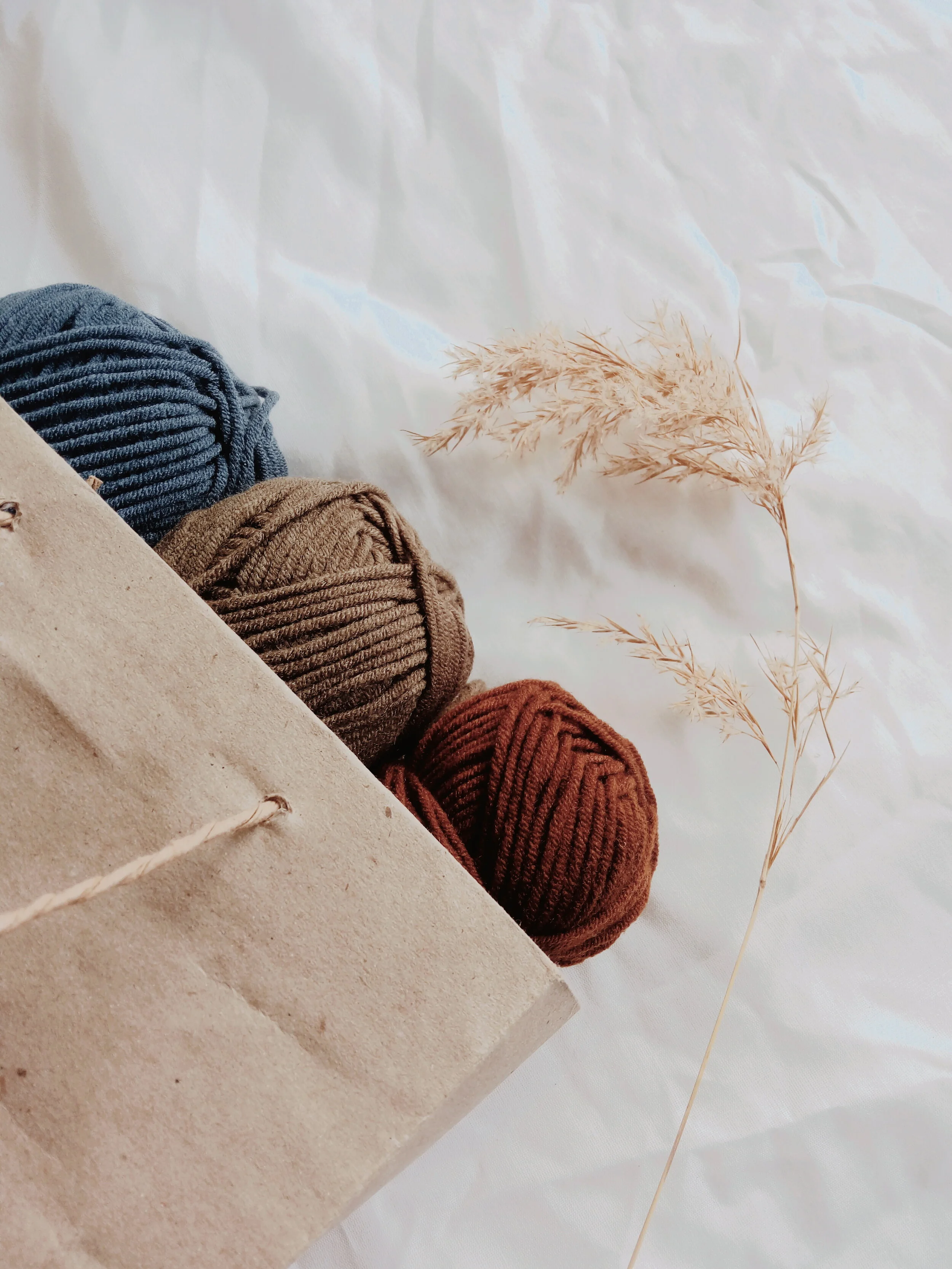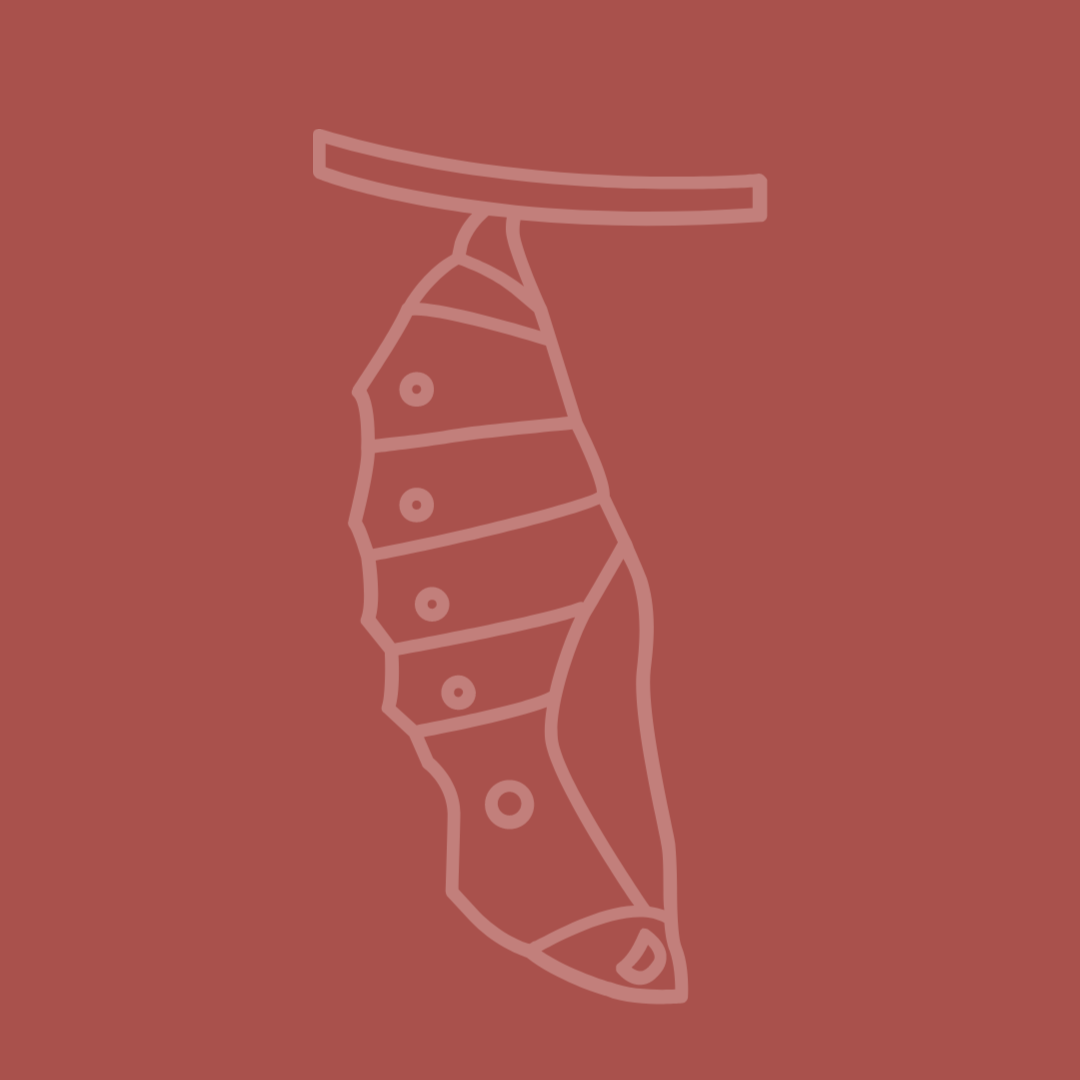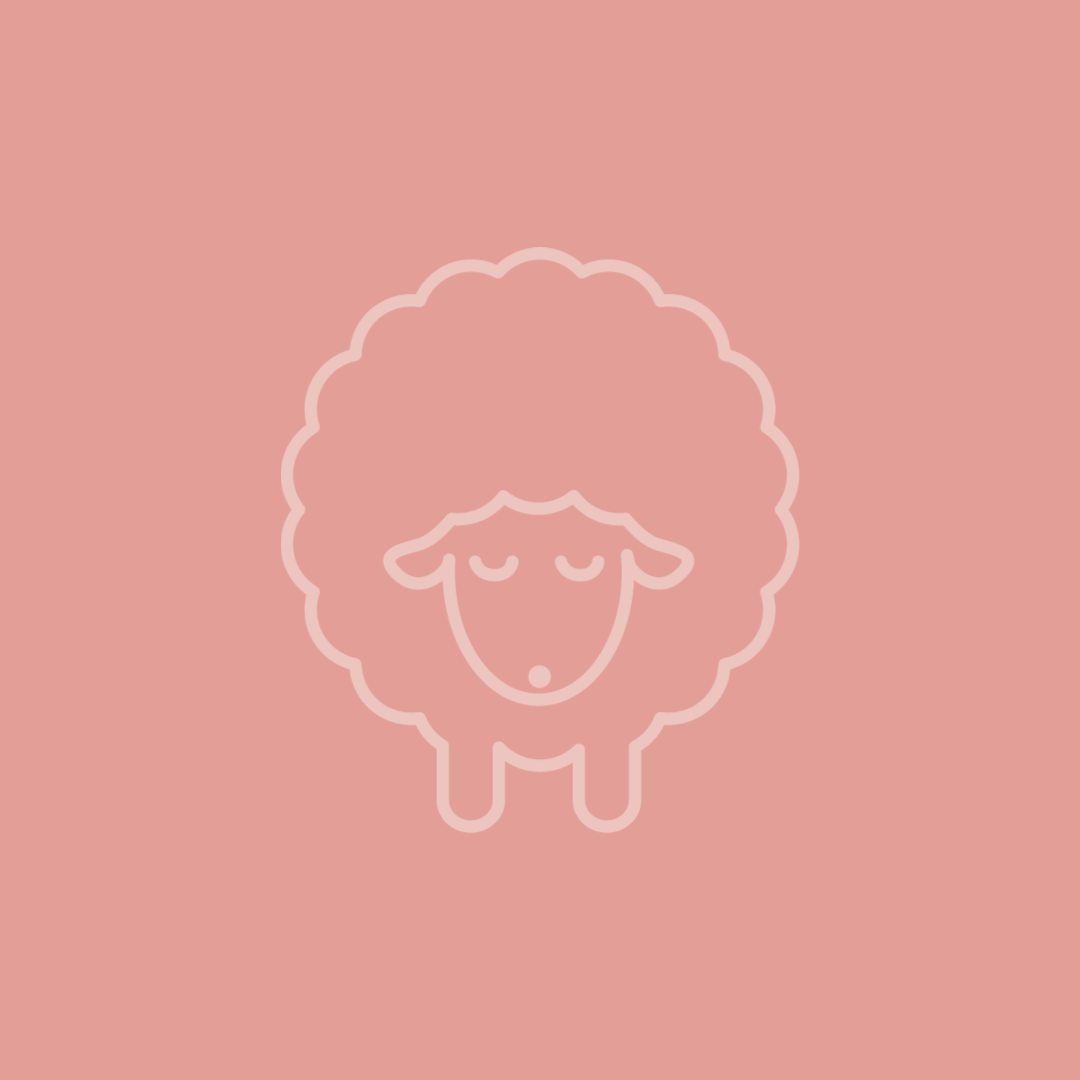Wool
A sheep in a pasture. Photo by Martin Schmidli
Wool comes from sheep who were bred through thousands of years to clothe people. This means that people selectively chose certain sheep breeds because their hair was suitable for creating yarn. The result of this breeding means that much of the hair that is cultivated from sheep is down or the insulating undercoat. This makes wool perfect for keeping you feeling the hygge vibes.
Protein fibers come from animals like sheep, alpaca, camels, goats, horses, llamas, musk ox, and angora rabbits. Animals are just like you. Just like your hair is made of protein, animal hair is also made from similar stuff aka amino acids. In fact, wool is made of keratin which is also found in human nails and hair. Those proteins are made of various recipes of carbon (C), hydrogen (H), and oxygen (O). See, those lessons on the Periodic Table of Elements were worth it. Some of those animal hair recipes (formulas) include nitrogen (N) and sulfur (S) which changes the smell of hair it burns. This is the smell of your hair when you burn it with a flatiron. Protein or hair fibers have a dry, warm feeling. And they are weaker while wet. Remember that bit when taking care of your own hair. Hair is weakest when it is wet. Try not to brush your hair too much after you wash it.
Sheep are sheared or shaved once a year for their fleece. The fleece is full of lanolin, which protects natural protects the sheep from the environment. Side note: lanolin is used in many beauty products, lubricants for machines, and many more applications. The lanolin, sweat, dirt, and twigs are removed from the fleece through scouring and carbonization. This process can include chemicals that impact the environment.
Why Wool?
A wool coat packs a lot of warmth without a lot of fluff. Photo by Les Triconautes
This fiber is warm, lightweight, and absorbs moisture. This means it will keep you warm without a lot of heavy fabric. Think of how wonderfully warm a fitted wool peacoat is without all the fluffiness of a puffer jacket. The absorbency of wool makes it perfect for keeping you comfy by wicking sweat away from your body. If you have ever owned a pair of Allbirds’ shoes or Uggs then you have experienced this. Wool is also very strong which is why it is used for good carpeting. The strength of wool is the reason that it lasts for years. It doesn’t wrinkle or stain easily.
Where does wool come from?
Different breeds live all over the world in places with space for grazing herds. Australia, New Zealand, China, South Africa, and Uruguay produce much of the wool that is sold throughout the world. The merino wool from Australia has an ancestral line that dates back to the Roman empire.
Impact on the environment
Overgrazing is an issue with high volume wool production. Photo by Patrick Schneider
Wool’s impact on climate change is determined by the way the animals are raised and how they graze. Overgrazing of an area can erode soil and a harmful reduction in plant cover that leads to a warming effect. The best practice of grazing is to rotate sheep with cattle to allow the animals to access a diversity of grasses for great nutrition. In the UK, organic sheep herds are fed organic grains. The fertilizers and pesticides used on pastures can contribute to climate change. Like cows, sheep release methane. Recycled wool is an option that has a low impact on the environment.
How do I know if it’s good quality?
Merino is considered fine wool because of its soft hand feel and crimp texture which makes it suitable for creating great yarns. Wool is often thought of as itchy. A fine wool like merino is not itchy, but rather comfortable.
Felt
The strength and cushion of felt make this a great option for a laptop case. Photo by
Like human hair, animal hair has an outer scale cover (cuticle) on each strand. With water, soap, and friction, the scales allow for the fibers to lock onto each other. That tangling of fibers is felting. It is a similar process in loc-ing human hair aka dreadlocks. The shrinkage that happens after your wool sweater takes a turn in the washing machine party, is actually felting. Felt is a way of forming a fabric without weaving or knitting. Felt fabric is warmer than woven or knitted fabric because the fabric has fibers that are closer together. That peacoat that I mentioned previously is traditionally made of felted wool. Crappy versions of peacoat are made with woven acrylic. If you think that peacoats aren’t warm, then you may have had one of those acrylic imposters.
Watch my video featuring needle felting.
Dyeing at home
Wool is wonderful for dyeing. It works well with natural dyes, dyes made from foodstuffs, acid dyes, and food coloring. Kool-Aid can make beautiful hues on wool while being kitchen safe.
Wool Care & Storage
Washing
Wool is fairly easy to care for. One of the common problems of wool garments is shrinkage aka felting. You can prevent this from happening. Use lukewarm water and mild soap like shampoo or dishwashing liquid. Woolite works too but it is full of nasty chemicals. There should be very little movement while washing the garment because friction causes the fibers to tangle (see felting). Gently work the soap and water through the garment to get out the dirt and body oils. Soak it for several minutes and then work it again gently. Rinse until the water is clear of bubbles. Squeeze the water out of the garment (don’t wring it, because that is too much friction).
There is machine washable wool which will be announced on the label or hangtag of the garment when you buy it. Usually this means that a chemical treatment was applied to keep the wool from felting.
To dry clean or not to dry clean
Wool yarn. Photo by Annisa Ica
Mainly by washing your wool garment by hand. Often on wool garments the labels suggest, “Dry Clean Only.” This is just the manufacturer trying to ensure a low risk of liability by steering you the least risky method of cleaning. Avoid the dry cleaning bill and unnecessary chemicals by hand washing your garment. Although dry cleaning does ensure colorfastness (how vibrant the color remains after washing) on wool fabrics.
Drying
Dry flat on a towel or a sweater drying rack.
Pests
Moths and carpet beetle larvae love protein. They eat through sweaters like the Very Hungry Caterpillar. If you find moth holes in your clothes, you can stop the infestation by bagging the garment and freezing it. To prevent them from coming to your closet, use sachets of lavender and/ or rosemary because they hate the scent. The natural oil of cedar kills moth larvae. Put away out of season clothing in dry, airtight containers.
Light
Exposure to sunlight over many years can cause wool to degrade or weaken.
Heat
Imagine what hair is like after frequent blowouts. It’s frazzled and full of dry dead ends. Wool also gets dry from heat exposure. This is why it’s not a great candidate for tumble drying.
Ironing
You can use steam on a wool garment. Just use a pressing cloth or towel or a cotton bed sheet between your garment and the iron. This will prevent scorching to your wool garment.

